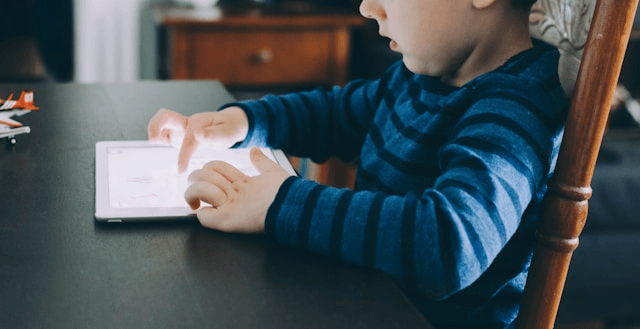In today’s digital world, screens are everywhere from smartphones and tablets to laptops, televisions, and smartwatches. While technology has brought convenience and connectivity, it has also led to a dramatic rise in screen time. For many, the question is no longer if we’re spending too much time on screens, but how much is too much and what we can do about it.
If you’ve found yourself glued to your phone for hours or noticed your kids zoning out in front of a tablet, it’s time to take control. In this article, we’ll show you how to track and limit screen time effectively, improve your digital wellbeing, and create a healthier relationship with your devices.
The Impact of Excessive Screen Time
Too much screen time can take a toll on your physical, mental, and emotional health. Let’s break it down:
1. Physical Health Effects
-
Eye strain and headaches from prolonged screen use, also known as digital eye strain or computer vision syndrome.
-
Disrupted sleep due to blue light exposure, which interferes with melatonin production.
-
Sedentary lifestyle leading to weight gain and poor posture.
2. Mental and Emotional Health
-
Increased anxiety and stress, particularly with constant social media notifications.
-
Reduced attention span and focus, especially in children and teenagers.
-
Addiction-like behavior compulsively checking phones or scrolling social feeds.
3. Social and Productivity Issues
-
Less face-to-face interaction with family and friends.
-
Reduced work or study performance due to multitasking or frequent digital distractions.
How to Track Screen Time
Before you can limit screen time, you need to understand where it’s going. Thankfully, many tools make this easy.
1. Built-in Screen Time Trackers
-
iOS Screen Time (iPhone/iPad): Gives a detailed breakdown of app usage, pickup frequency, and notifications. You can set app limits and downtime schedules.
-
Android Digital Wellbeing: Tracks screen time, app usage, and allows you to set timers and bedtime mode.
-
Windows & macOS Screen Time Tools: Track app usage on desktops and set restrictions or focus modes.
2. Third-Party Screen Time Apps
-
RescueTime: Ideal for professionals and students to monitor time spent on websites and applications.
-
Freedom: Blocks distracting websites and apps across all devices.
-
Qustodio: Excellent for parental control, monitoring children’s online activities and setting usage limits.
3. Manual Tracking
-
Screen time journals: Write down when and why you use screens throughout the day.
-
Use a stopwatch or simple timer to monitor periods of usage, especially during work or study sessions.
Strategies to Limit Screen Time
Knowing how much screen time you’re getting is only half the battle now it’s time to take action.
1. Set Daily App and Device Limits
Use built-in features to cap time spent on specific apps (like Instagram, YouTube, or TikTok). You can also set total screen time allowances per day.
2. Schedule Device Downtime
Create rules for when screens are off-limits for example:
-
No screens during meals
-
Power down all devices 1 hour before bedtime
-
Screen-free mornings until after breakfast
3. Create Screen-Free Zones
Designate certain areas of your home as tech-free, such as:
-
Bedrooms
-
Dining areas
This promotes healthier boundaries and encourages more face-to-face interactions.
4. Encourage Alternative Activities
Replace screen time with other engaging activities:
-
Reading books or magazines
-
Outdoor play or exercise
-
Creative hobbies like drawing, writing, or cooking
-
Board games and puzzles
Tips for Parents and Families
Limiting screen time for kids can be especially challenging, but with consistency and teamwork, it’s absolutely possible.
1. Be a Role Model
Children mimic adult behavior. If they see you constantly on your phone, they’ll assume it’s okay. Show them what healthy screen habits look like.
2. Set Family Screen Rules
Create a written or visual plan outlining:
-
How much screen time is allowed daily
-
Approved content and apps
-
Screen-free times or zones
3. Use Parental Control Tools
Apps like Qustodio or Apple’s Family Sharing features let you monitor your child’s screen use and set limits remotely.
4. Open the Conversation
Talk to your kids about why it’s important to limit screen time. Involve them in setting boundaries and let them suggest alternatives.
Building Sustainable Digital Habits
Change doesn’t happen overnight. Reducing screen time is about small, consistent steps.
1. Gradual Reduction
Start by cutting back 15–30 minutes a day and build from there. Sudden digital detoxes may be too extreme and lead to rebound behavior.
2. Reflect Regularly
At the end of each week, review your screen time stats. What apps are eating up your time? When are you most prone to distraction?
3. Celebrate Progress
Whether it’s a day without social media or a full week of screen-free dinners, reward yourself (or your family) for hitting those goals.
Conclusion
Learning how to track and limit screen time isn’t about cutting out technology altogether it’s about using it intentionally. With the right tools and strategies, you can reclaim your time, improve your mental and physical wellbeing, and build better habits for the future.
Try setting small goals today: use a screen time tracker, set a simple app limit, or declare the dinner table a device-free zone. Over time, these habits add up.









